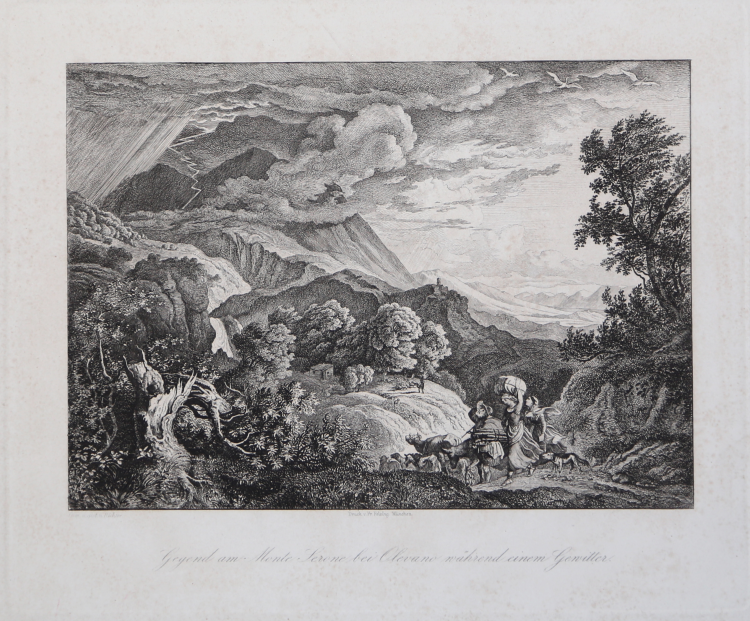


| Reference: | S20233 |
| Author | Adrian Ludwig RICHTER |
| Year: | 1848 |
| Zone: | Olevano Romano |
| Printed: | Dresden |
| Measures: | 287 x 235 mm |


| Reference: | S20233 |
| Author | Adrian Ludwig RICHTER |
| Year: | 1848 |
| Zone: | Olevano Romano |
| Printed: | Dresden |
| Measures: | 287 x 235 mm |
Celebre veduta di Olevano Romano con il Monte Scalambra, incisa da A. L. Richter dal proprio dipinto,
Acquaforte, leggere ossidazioni, per il resto in ottimo stato di conservazione.
Adrian Ludwig RICHTER (Dresda 1803 - Loschwitz, Dresda, 1884)
|
Adrian Ludwig Richter, a German painter and etcher, was born at Dresden, the son of the engraver Karl August Richter, from whom he received his training; but he was strongly influenced by Erhard and Chodowiecki.
He was the most popular, and in many ways the most typical German illustrator of the middle of the 19th century. His work is as typically German and homely as are the fairy-tales of Grimm. Richter visited Italy from 1823–1826, and his Thunderstorm in the Sabine Mountains at the Staedel Museum in Frankfurt is one of the rare Italian subjects from his brush. In 1828 he worked as designer for the Meissen factory, and in 1841 he became professor and head of the landscape atelier at the Dresden Academy. The Dresden Gallery owns one of his best and most characteristic paintings: Bridal Procession in a Spring Landscape. An eye disease put a stop to the practice of his art in 1874; he was pensioned in 1877, and died at Loschwitz, near Dresden.
|
Adrian Ludwig RICHTER (Dresda 1803 - Loschwitz, Dresda, 1884)
|
Adrian Ludwig Richter, a German painter and etcher, was born at Dresden, the son of the engraver Karl August Richter, from whom he received his training; but he was strongly influenced by Erhard and Chodowiecki.
He was the most popular, and in many ways the most typical German illustrator of the middle of the 19th century. His work is as typically German and homely as are the fairy-tales of Grimm. Richter visited Italy from 1823–1826, and his Thunderstorm in the Sabine Mountains at the Staedel Museum in Frankfurt is one of the rare Italian subjects from his brush. In 1828 he worked as designer for the Meissen factory, and in 1841 he became professor and head of the landscape atelier at the Dresden Academy. The Dresden Gallery owns one of his best and most characteristic paintings: Bridal Procession in a Spring Landscape. An eye disease put a stop to the practice of his art in 1874; he was pensioned in 1877, and died at Loschwitz, near Dresden.
|